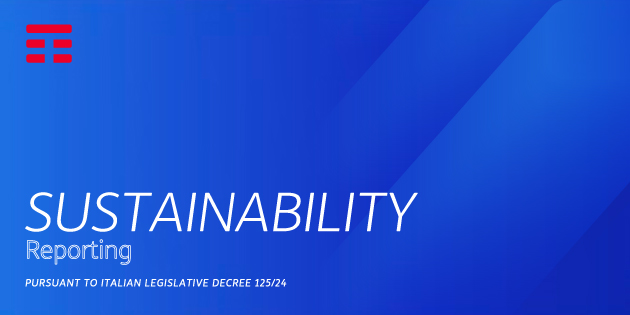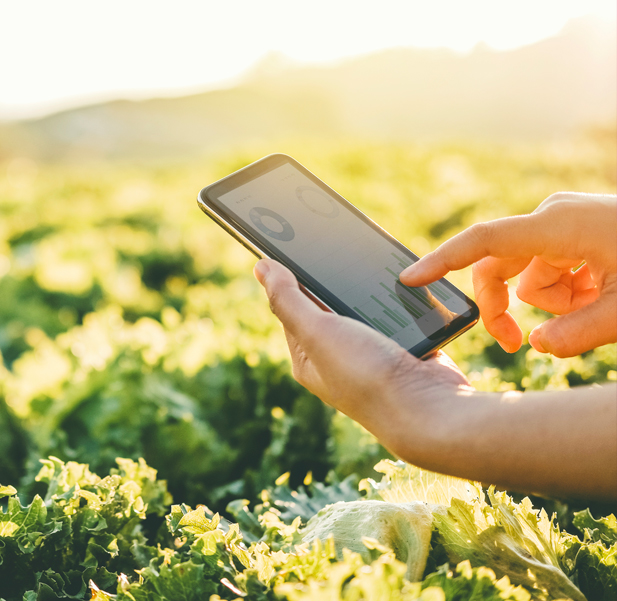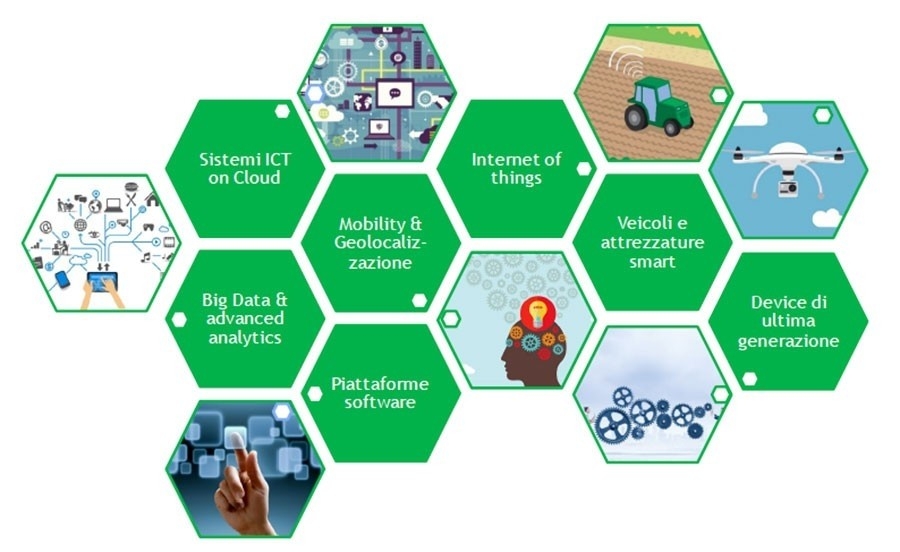There is ever more talk of the Smart Cities of the future, which, using wireless sensors to gather data on every aspect of urban life, promise to resolve the problems of towns and cities in terms of traffic, sustainability and safety. But the very same tools that will transform towns and cities, are currently revolutionising agriculture, to create smart agriculture that, among other things, will let us reduce by as much as 85% the use of pesticides, reduce waste and consumption of resources and drastically increase the quality and quantity of harvests.
All this thanks to the Internet of Things, which helps smart agriculture (also known as precision agriculture) using WiFi sensors, fixed or mounted on drones, to gather information on and images of every single area or different crop in a field, showing everything from the level of humidity in the soil to the health of the plants, all the way to their growth stage and much, much more. All this data is sent by the cloud to a computer that analyses the plants' health and can identify signs of stress or illnesses.
For farmers, who can assess the information and analysis in real time, this technological revolution allows them to decide how to spread water, pesticides and fertilisers with hitherto unimaginable speed and accuracy. Studies show that digital innovation will increase harvests and turnovers by as much as 20%. It is also estimated that the global market for smart agriculture will reach a value of 11.23 billion dollars by 2022.
At the same time, agriculture could go back to being environmentally sustainable, as pointed out in the Scientific American: “As the world’s population grows, farmers will need to produce more and more food. Yet arable acreage cannot keep pace, and the looming food security threat could easily devolve into regional or even global instability. To adapt, large farms are increasingly exploiting precision farming to increase yields, reduce waste, and mitigate the economic and security risks that inevitably accompany agricultural uncertainty.”
Thanks to smart agriculture, then, we will overtake the current model of intensive farming, which has indiscriminately exploited natural resources over the last 50 years, caused deterioration and current shortages, demanded a social and environmental price that is no longer affordable, polluted, reduced biodiversity and rendered the soils less fertile. This problem has now become an urgent one in Italy.
The good news is that cutting-edge solutions to these serious problems already exist. An all-Italian example is Olivetti's IoT Smart Farm, just presented at SMAU in Bologna. It is a cloud platform that offers companies a complete system of tools and information for precisely monitoring the factors in the physiological state of plants, necessary irrigation and crop yields. The data is collected by a network of sensors in the field, then sent to an application, which controls all the relevant parameters and intervenes quickly and precisely when needed.
Another important new invention is Digital Fields, a project created by TIM WCAP's open innovation hub, again in collaboration with Olivetti, to create a special laboratory for the digital transformation in Italian farming. This laboratory will be based in Bologna and be used by start-ups, SMEs, big companies, academies and NGOs to study and test ideas, projects and business opportunities.
They will be able to analyse and design new systems, like perhaps remote sensing by satellites and drones for customising interventions, based on the specific features of the land and its crops. Resources can be optimised (beginning with water), along with chemicals, fertilising fields bit by bit based on what is needed.
Smart Agriculture's enabling technologies
The soldiers of this work could be drones, deployed in small groups to work independently on parts of fields, distributing fertilisers or pesticides, for example. One of the most interesting experiments is into using drones to pollinate plants in places where bees are most declining (or where a cold spring has left them sluggish). All these solutions will prompt another step forward in quality when the next generation of mobile data transmission, 5G, is here. Its low latency will allow it to control drones very precisely, while its broadband speed (as much as 20 times higher than 4G's) will allow it to send high-definition photos and videos in real time.
We are about to enter the era of self-driving cars, and it was inevitable that this brand-new technology would also reveal its potential in the field of smart agriculture. Companies like John Deere and CNH Industrial are developing truly smart tractors, ones that can not only drive themselves but carry out some tasks in the field alone, gathering information and taking independent decisions on what is most productive. The farmer of the future will no longer sit in a tractor. He is better imagined with a tablet in his hand, marshalling armies of drones and tractors and planning work from afar on applications. Productivity will increase and waste, consumption and pollution will go down in tandem.







